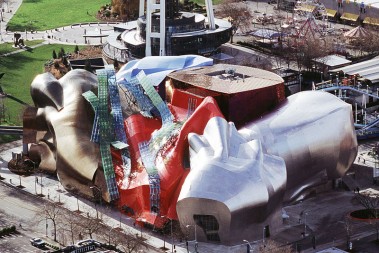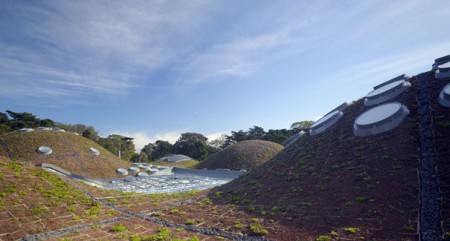
Facebook hired Frank Gehry to design its new building. Why?
Given its plummeting stock price, the company was probably pleased to find an architect who prides himself on staying within budget. But if the 'book wanted a green building (and who'd dare to build in the Bay Area without "a big emphasis on being eco-friendly"?), Gehry is a less than obvious choice.
According to Wikipedia, "Much of Gehry's work falls within the style of Deconstructivism, which is often referred to as post-structuralist in nature for its ability to go beyond current modalities of structural definition." (Stop laughing, this is serious!) "In architecture, its application tends to depart from modernism in its inherent criticism of culturally inherited givens such as societal goals and functional necessity."

It's hard to imagine a style that rejects societal goals and functional necessity meshing with any kind of environmentalism. On the other hand, "green building" covers a panoply of potential architectural attributes, so maybe there's room for overlap.
Gehry has a history of appreciating everyday building materials, like plywood and metal, which could be relatively sustainable if recycled and/or sourced locally. (Eco-pop quiz: would it be "green" to import recycled material from China?)

